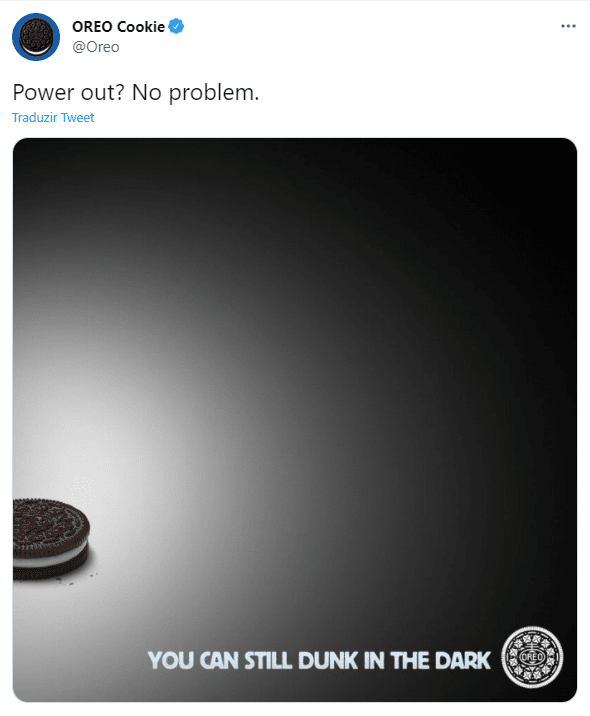Over the years, digital marketing has evolved from a new idea that companies are just starting to understand to the point where there are a plentiful number of strategies that you can use to form your program.
While this provides marketers with the ability to deep dive into their organizations and find the right approaches that bring the best results, it can also leave marketers confused about which way to turn.
While some strategies aren’t right for your annual or quarterly plans, real-time marketing is an example of a strategy that all brands should be aware of, as it’s hard to implement into a long-term marketing strategy but can bring about great results.
- But just what is real-time marketing?
- How can you implement it if you can’t plan in advance?
- And what are some examples of major brands that have found success with real-time marketing?
This article will answer those questions and more.
- What is Real-Time Marketing?
- Why Does Real-Time Marketing Work?
- 4 Tips to Succeed with a Real-Time Marketing Strategy
- Real-Time Marketing Examples
- Wrap Up: Real-Time Marketing is a Great Strategy for Brands
What is Real-Time Marketing?
Real-time marketing, as you might be able to guess from the name, is a marketing approach that comes from reacting to current events, trends, or feedback in real or near-real time, almost always on social media.
Real-time marketing is highly dependent on social listening, as it’s through following social trends, hashtags, and conversations that brands can find the right real-time events to join in and engage with.
This means that it’s not a strategy that can be built into your content calendar, as it happens in the moment.
Because real-time marketing can’t be planned in advance, many brands balk at the idea of spending too much time on it unless they have a full-time social media team.
However, the success of real-time marketing means that every marketer should be aware of it in case an opportunity falls on their lap.
Why Does Real-Time Marketing Work?
So why does real-time marketing work? Why does it have the potential to bring in more conversions than a carefully planned, researched, and executed social campaign?
There are a few different reasons to look into it.
➤ The first reason has to do with a consumer’s instinct to impulse buy.
Around 40% of customer spending is based on impulse, according to a white paper on e-commerce from User Interface Engineering.
When a brand can jump on a social trend or comment on a current event as it’s happening, you can reach a consumer right when they are the most likely to be receptive to a brand and make an impulse purchase.
Making a good impression with real-time marketing can impact more than just impulse buys.
➤ Another benefit of real-time marketing is the great things it can do for your brand awareness.
Some of the best real-time marketing examples play up the humor of situations and can help improve your brand’s reputation among younger audiences.
➤ You can also raise your social media presence with well-done real-time marketing.
If your social platforms are known for humor or witty responses to current events, you can gain a stronger following for your planned social campaigns.
4 Tips to Succeed with a Real-Time Marketing Strategy
Getting started with real-time marketing can be a bit difficult for some brands who haven’t spent a lot of time developing their social listening, so here are a few tips to help you understand what to do and what to avoid:
Tip 1: Understand What People Are Talking About
It’s impossible to get ahead with real-time marketing unless you have a grasp of what people are discussing on social channels.
You’ll need to keep on top of events as they happen to understand the latest trends, memes, and news stories.
Try using Google Alerts for topics in your industry or check Google Trends to see what searches are trending.
You can also use the trending sections on different social platforms like Twitter to see what people are talking about.
You’ll also want to make sure you understand exactly what the event or trend is about.
You don’t want to make a comment or join in on a trend with an unclear origin, and it’s important to know when it’s appropriate to join the conversation and when it isn’t.
Tip 2: Be Quick
Real-time marketing won’t work if you’re late to the party.
Think of examples of times where a commercial or television show has referenced an event or trend that’s already long gone by the time it airs.
Rather than being current and capturing the appeal of audiences, the jokes feel stale and overdone or, at worst, embarrassing.
In order to quickly join a social conversation, you need to have a responsive team that can be ready to roll at a moment’s notice.
If your company doesn’t have the staff for a full-time social media team, try freelancers or agencies who are prepared for rush orders.
Tip 3: Don’t Post and Log Off
A great piece of content referencing a current event or trend on your social channels is fantastic, but it’s only half the battle.
A large part of real-time marketing is having real-time conversations with your audiences.
Respond to comments, reshare other’s posts about the event, or add your own thoughts to another post.
Keep in mind, however, that it is possible to go overboard in your social response.
Don’t flood your channels with content about events, but keep it tasteful and appropriate. Respond accordingly and know when to end your engagement around events.
Tip 4: Plan What You Can
While some of the best real-time marketing examples come from the spur of the moment, there are some ways to prepare:
Prepare Your Team
If you have a social team or even a single social media person, have them be aware of your guidelines for posting and expedite the approval process for real-time events.
You can also have your design team on-call for images and graphics as needed.
Check the Calendar
While some trends and events come seemingly out of nowhere, you can keep an eye out for events that interest your audiences or you know will bring about social conversations.
Create Brand Guides and Processes
Having a set of guidelines for your social team can help them know what tone and voice to approach real-time events with, as well as any guidelines around events you do not want your brand interacting with.
Real-Time Marketing Examples
As discussed above, real-time marketing can’t be totally planned in advance but requires your brand to be aware of current trends and have the resources and willingness to create content or responses for these real-time events as they happen.
It’s not an easy task, but if your team is up for the challenge, you can find monumental success.
Let’s take a look at two great examples of brands that used real-time marketing to sell products, raise brand awareness, and showcase sides of their brand that aren’t always prominent.
Oreo and Superbowl XLVII
You can’t talk about real-time marketing without mentioning the example that started it all.
During 2013’s Superbowl XLVII, there was an unexpected blackout that resulted in a full 34 minutes of halted game time.
However, 34 minutes was all it took for Oreo to change the game of marketing.
Oreo took advantage of the huge audience at the event and the ongoing social discussions to post a tweet with the caption “Power out? No problem.”
The included image was a simple design of an Oreo cookie on a dark screen with the text “You can still dunk in the dark”.
The post was retweeted 10,000 times in the first hour and is responsible for starting the trend of real-time marketing.

Samsung Chargers
Apple surprised audiences during their 2020 product announcement event by revealing they would no longer be including chargers in their iPhone packages.
This, understandably, received some immediate criticism and accusations of trying to take more money from customers by forcing them to buy chargers separately.
Samsung took advantage of this upset and posted on Facebook a reminder for all their customers that Galaxy phones do come with chargers, which not only helped add some humor to the situation but helped them differentiate from their biggest competitor.

But, wait, there’s more to this example!
Recently, the brand has deleted the post for one simple and very awkward reason: Samsung will also remove chargers from future phones.
This reveals one of the dangers of real-time marketing. You need to be quick responding to things, but you also need to be smart.
It’s essential to have a trained team that knows what’s going on in the company and its future plans.
Wrap Up: Real-Time Marketing is a Great Strategy for Brands
Especially the ones that want to have real, relevant conversations with their audiences and take advantage of community moments to help promote brand awareness and push for impulse buying.
Real-time marketing also requires real-time work, and a social team needs to be aware of trends, quickly produce content or responses, and work to monitor and engage with audiences in order to get the best results.
Creating a content strategy is an important part of your digital marketing program.
If you’re a marketer who wants to improve your content strategy skills, check out our quick assessment and discover how to make your Content Strategy Rock!










